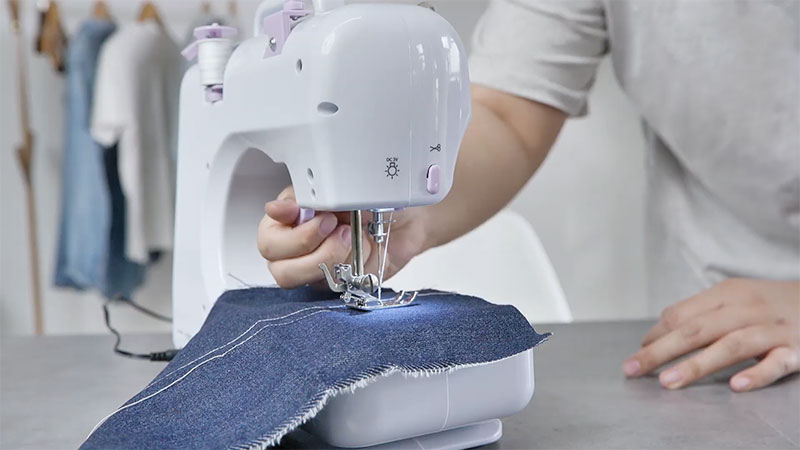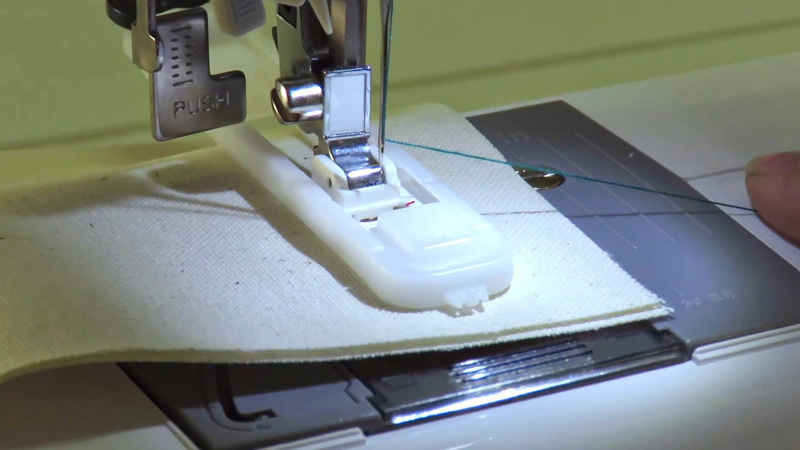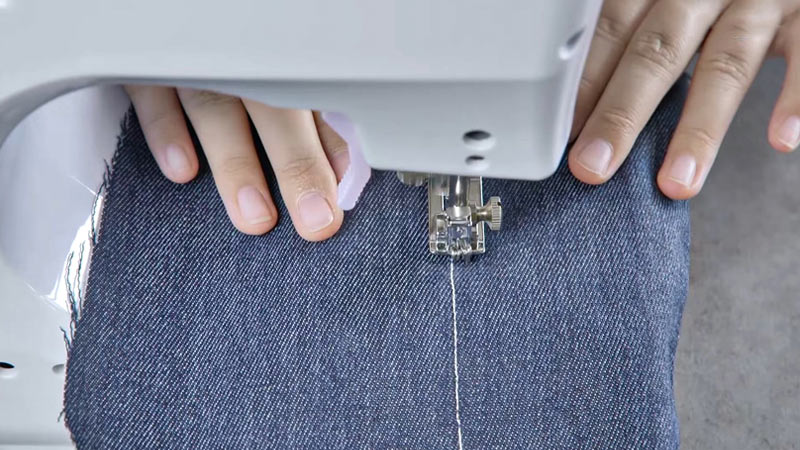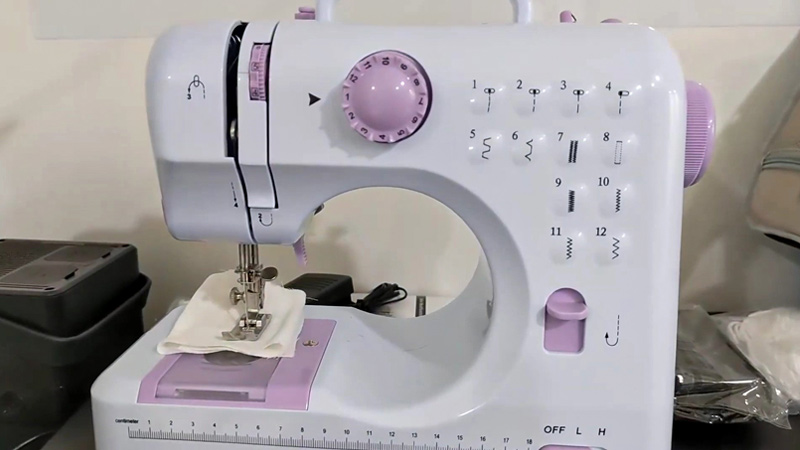Built-in stitches on a sewing machine are the pre-programmed stitch patterns that serve as the machine’s foundational repertoire.
These stitches encompass a range of essential and decorative patterns, providing versatility for diverse sewing projects.
Whether you’re a novice seamstress or an experienced crafter, understanding these built-in stitches unlocks a world of creative possibilities.
From the basic straight stitch for fundamental seams to intricate decorative patterns, these stitches cater to various fabric types and project requirements.
As a vital component of any sewing machine, built-in stitches empower users to achieve professional finishes, add unique embellishments, and explore the boundless potential of their sewing endeavors.

What Are Built-in Stitches on a Sewing Machine?
Built-in stitches on a sewing machine are pre-programmed stitch patterns that come as standard features with the machine. These stitches are designed to cater to various sewing needs and applications, offering versatility and convenience to users.
The number and types of built-in stitches can vary widely depending on the make and model of the sewing machine.
Here are some common types of built-in stitches found on sewing machines:
Straight Stitch
This is a fundamental stitch used for basic sewing tasks like joining fabric pieces and topstitching. The length of the stitch can often be adjusted to suit different fabrics and projects.
Zigzag Stitch
A versatile stitch used for finishing edges, preventing fraying, and providing stretch in seams. The width and length of the zigzag can usually be adjusted.
Buttonhole Stitch

Designed specifically for creating buttonholes. Some machines have one-step buttonhole features, simplifying the process.
Blind Hem Stitch
Used for creating inconspicuous hems, especially on garments where a visible stitch line is undesirable. It involves a combination of straight and zigzag stitches.
Overlock or Overcasting Stitch
Resembling the edge finish produced by a serger, this stitch prevents fabric edges from fraying. It’s commonly used for knit fabrics.
Decorative Stitches
Sewing machines often have various decorative stitches, ranging from simple patterns to intricate designs. These stitches are great for embellishing projects and adding a creative touch.
Stretch Stitches
Specifically designed for sewing on stretchy fabrics, these stitches accommodate the fabric’s elasticity without compromising the seam’s strength.
Quilting Stitches
Some machines have built-in stitches tailored for quilting projects. These may include stippling patterns, decorative quilting stitches, and more.
Satin Stitch
A dense, closely spaced zigzag stitch often used for appliqué and creating decorative borders.
Cross Stitch
Simulates the appearance of hand cross-stitching, adding a unique touch to embroidery projects.
How Many Built-in Stitches Should a Sewing Machine Have?

The number of built-in stitches a sewing machine should have depends on the individual’s sewing needs and preferences. A machine with 20-50 stitches covering basics like straight, zigzag, and buttonhole stitches is often sufficient for beginners.
Intermediate sewists may prefer 100-200 stitches, including decorative and specialty options. Advanced users or those into quilting and embroidery might opt for machines with 300 or more stitches, incorporating intricate designs.
It’s essential to consider the types of projects you plan to undertake and whether the machine’s features align with your skill level and creative aspirations. Quality and functionality matter more than sheer quantity in built-in stitches.
Choosing the Right Built-in Stitch for Your Sewing Project.
Choosing the right built-in stitch for your sewing project involves considering the type of fabric you’re using, the purpose of your project, and the visual effect you want to achieve.
Here’s a step-by-step guide to help you make the right choice:
Understand Your Project
Determine the nature of your sewing project. Are you making garments, quilting, or working on a decorative item? Each project may require different stitches.
Consider the Fabric
Take into account the type of fabric you’re working with. Some fabrics, like knits, may require stretch stitches, while heavy fabrics, like denim, may benefit from reinforced stitches.
Review Your Sewing Machine Manual
Consult your sewing machine’s manual to understand the built-in stitches available. The manual will often provide information on the intended use of each stitch and may suggest which stitches are suitable for specific fabrics or applications.
Test on Scrap Fabric

Before stitching on your actual project, test the selected stitch on a scrap piece of fabric. This allows you to assess the stitch quality, tension, and appearance and make any necessary adjustments.
Consider Seam Type
Different built-in stitches are suitable for various seam types. For example, straight stitches are common for basic seams, while zigzag stitches are versatile for finishing edges and preventing fraying.
Factor in Decorative Elements
If your project involves decorative elements, explore the decorative stitches on your machine. These stitches can add unique patterns and flair to your creations.
Evaluate Buttonholes
Use the designated buttonhole stitch on your sewing machine if your project requires buttonholes. Modern machines often have one-step buttonhole features for convenience.
Adjust Stitch Length and Width
Depending on your project, you may need to adjust the stitch length and width. Longer stitches are suitable for basting or decorative purposes, while shorter stitches provide more strength.
Consider Special Stitches
Some sewing machines have special stitches designed for specific purposes, such as quilting, appliqué, or hemming. Explore these stitches if they align with your project needs.
Check Tension and Thread
Ensure that the tension settings and thread type are appropriate for the selected built-in stitch. Proper tension is crucial for achieving balanced and professional-looking stitches.
Think About Project Details
Consider any specific details of your project, such as the need for stretch in the seams, reinforced stitching for durability, or the desire for a decorative edge finish.
Experiment and Get Creative
Don’t be afraid to experiment with different stitches and combinations to achieve a unique and creative look. Mix and match stitches to add personal touches to your sewing projects.
Can Built-in Stitches Replace the Need for Additional Sewing Accessories?
Built-in stitches on a sewing machine provide versatility for many tasks, yet additional sewing accessories remain crucial. Specialized presser feet, walking feet, and attachments offer precision for specific tasks like quilting, hemming, or inserting zippers.
While built-in stitches cover basics, accessories enhance efficiency and expand creative possibilities. Buttonhole feet streamline buttonhole creation, quilting feet aid quilting projects, and zipper feet facilitate zipper insertion.
Sergers, not typically part of built-in stitches, create professional finishes.
Overall, while built-in stitches are versatile, the synergy with additional accessories elevates a sewist’s capabilities, making the sewing process more efficient and accurate and allowing for a broader range of techniques and finishes.
FAQs
Are all sewing machines equipped with the same built-in stitches?
No, the number and types of built-in stitches vary between sewing machine models and brands. Higher-end models may offer more built-in stitches and additional features.
What are the different stitches on a sewing machine?
Common sewing machine stitches include straight, zigzag, buttonhole, blind hem, overlock, decorative, stretch, quilting, and elastic stitches, providing versatility for various sewing projects.
Are there specific stitches for quilting on a sewing machine?
Yes, some sewing machines come with built-in stitches tailored for quilting projects. These stitches may include patterns suitable for quilting and decorative stitching.
Can I customize or add more built-in stitches to my sewing machine?
Most sewing machines do not allow users to add or customize built-in stitches. However, high-end models may offer programmable features enabling users to create and save their stitch patterns.
How do I troubleshoot common issues with built-in stitches?
If you encounter problems with your built-in stitches, refer to the troubleshooting section in your sewing machine’s manual. Common issues may include tension problems, needle issues, or incorrect stitch selection.
To Recap
The built-in stitches on a sewing machine form the backbone of its functionality, offering a rich tapestry of sewer options.
From the simplicity of straight stitches to the intricacy of decorative patterns, these pre-programmed stitches empower users to bring their creative visions to life.
Whether you’re stitching garments, quilting, or adding embellishments, the versatility of built-in stitches ensures adaptability to diverse projects. They enhance efficiency, precision, and creative expression as a cornerstone of sewing technology.
In the hands of a skilled sewist, the built-in stitches become a dynamic toolkit, transforming fabric into personalized masterpieces and making the sewing experience a journey of both practicality and artistic exploration.
Leave a Reply